CANADA
History

History
Cities in CANADA
| Montreal | Ottawa | Vancouver |
Popular destinations CANADA
| Alberta | British columbia | Manitoba |
| New brunswick | Newfoundland and labrador | Northwest territories |
| Nova scotia | Nunavut | Ontario |
| Prince edward island | Quebec | Saskatchwan |
| Yukon |
History
First inhabitants: Inuit and Indians
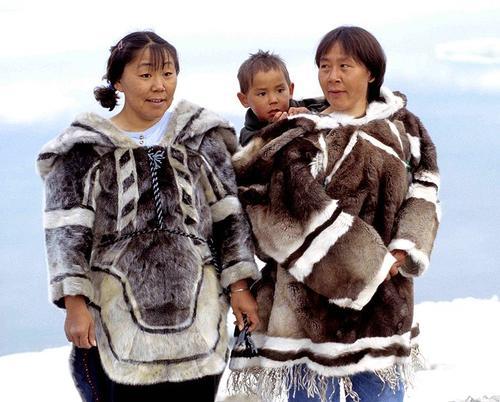
Inuit (Eskimos) and Indians were the very first inhabitants of immense Canada. About 35,000 years ago, Canada was still linked to Siberia, and nomadic peoples from Asia entered the American continent and spread throughout North America and South America. First of all, the Indians came; only later did the ancestors of the current Inuit appear. The Inuit settled in the arctic coastal regions of North America, in Greenland and northwestern Siberia. The Indians spread all over the American continent.
Vikings, English and French
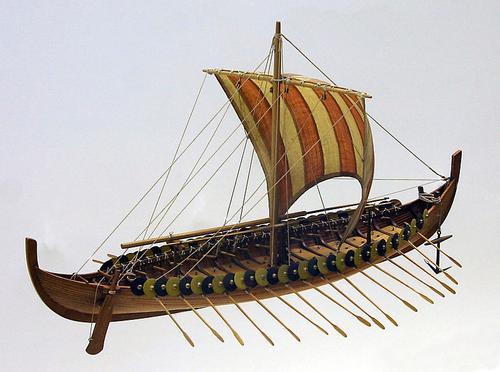
In the year 1000 AD. Norse Vikings were the first whites to reach Northern Canada. Remains of Viking settlements have been found in the province of Newfoundland (L’Anse-aux-Meadows). Five years after the discovery of America by Columbus in 1497, the Italian explorer Giovanni Caboto made a futile attempt to find his way to the East via North America. He did this on behalf of the English crown and is therefore known under the name John Cabot.
The French also claimed parts of Canada. Jacques Cartier sailed through Belle Isle Strait between Newfoundland and Labrador in May 1534 and discovered the St. Lawrence River and claimed the St. Lawrence River Valley for France. He also visited the areas around Montréal and Québec today, but no settlements were built. These areas were inhabited at the time by tribes of the Algonkins and Iroquois.
It was not until much later, in 1600, that the first temporary trading post was founded by the merchant Pierre Chauvin. In 1604, the first French settlers led by Samuel de Champlain arrived on Dochet Island in the St. Croix River. Not much later they moved on to Port Royal (now: Annapolis) in the province of Nova Scotia, which would become the first permanent settlement in all of Canada. In present-day Quebec, a trading post was founded in 1608 by Samuel de Champlain and Sieur de Monts.
In order to attract more settlers to "New France", the "Compagnie de la Nouvelle France" was founded in 1627 and was given a monopoly on trade with New France. However, the exploitation of raw materials failed due to wars between France and England. The Christianization of Indian tribes by French Jesuits was also very difficult.
Meanwhile, Henry Hudson had discovered Hudson Bay in 1610 during his search for northwestern passage to China and India (this only happened in 1964 with the help of a tanker icebreaker!). The colonization of New France progressed slowly; around 1775, less than 70,000 people lived in this large area. The current Great Lakes region on the border of the United States and Canada was also explored by the French, and they repeatedly encountered the English.
England and France at war for Canada
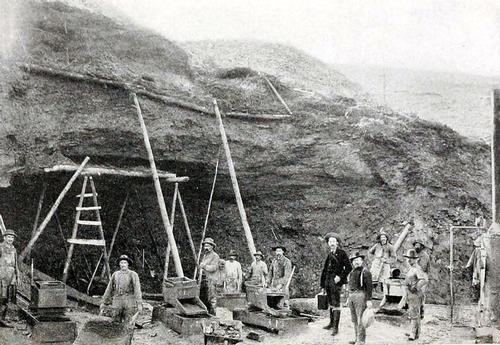 Canada Klondike Gold Rush (1899)Photo: Public domain
Canada Klondike Gold Rush (1899)Photo: Public domain
The eighteenth century was therefore dominated by continuous conflicts between the French and the English. The Paris Peace in 1763 forced the French to surrender all their possessions in North America to England, and the area was renamed British North America. Until 1791, the British ruled the former province of Canada, which became the British colony of Québec. Despite attempts to break the province, it has so far remained a province with a typically French character.
The struggle for independence between Great Britain and the thirteen Bitse colonies in North America was won by the latter and on July 4, 1776, the United States of America was declared through the "Declaration of Independence". Naturally, war broke out between Britain and the United States. Not all Americans agreed with the insurgents, however, and they moved to Canada and settled in the colonies of Nova Scotia, Prince Edward Island, New Brunswick, and Newfoundland.
Some of the loyalists also wanted the division of Québec into an English and a French part, because they did not feel at home there. In 1791 Britain proclaimed the "constitutional act" and Québec was divided into Upper Canada or British Canada (later Ontario), and Lower Canada or French Canada that would later become the province of Quebec. Each province chose its own parliament. In 1812, another war broke out between the United States and Great Britain, the "War of 1812".
In 1814 peace was made again and the conquered territories were returned. In 1837, various uprisings broke out in Upper and Lower Canada as a result of poor government. Britain decided in 1841 to bring the two provinces back under one administration through the "Act of the Union," and in 1849 the area gained a high degree of self-government. The British planned to make Canada a federation of all Canadian provinces as soon as possible. Central government was necessary for the development and defense of the area. The relationship between British Western Canada and French Eastern Canada also left much to be desired. In addition, the Civil War raged from 1861 to 1865, threatening to raid British colonies on Canadian soil. On July 1, 1867, Canada West (Ontario), Canada East (Québec), New Brunswick, and Nova Scotia were merged into a confederation under the British North American Act.
From that time on, the area was called "Dominion Canada" and had its own parliament and a governor-general as representative of the British monarch. The counties were largely self-governing in local affairs, but the federal government was based in Ottawa. Gradually, the current federation began to take shape and more counties joined the Dominion: 1870 Manitoba, 1871 British Columbia, 1873 Prince Edward Island, 1874 Northwest Territories, 1898 Alberta and Yukon Territory, 1905 Saskatchewan, and 1949 Newfoundland.
In 1885, the Canadian Pacific Railway was completed, establishing a direct connection between the West and East coasts. Emigration from Europe increased rapidly from the end of the 19th century. Between 1896 and 1911, about 3 million Europeans emigrated to Canada, which at the time was ruled by the Liberal Party led by French-Canadian Wilfrid Laurier. Gold was found in the Yukon Territory in 1896, and many now went to Canada, especially Americans. Because of this Klondike Goldrush, many families settled in the inhospitable areas which were therefore more populated.
World War I and II
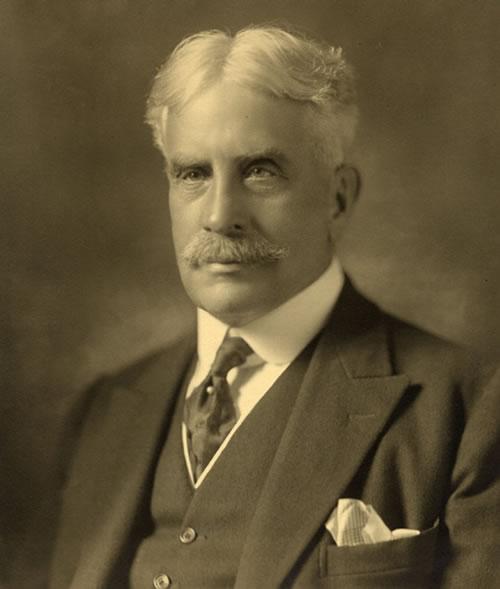
Laurel was succeeded in 1911 by Robert Laird Borden, under whose reign Canada actively participated in the First World War. Canada sent more than 600,000 soldiers to Europe to help the British and had approximately 60,000 deaths. In 1919, Canada joined the League of Nations, thereby gaining recognition as a full-fledged nation. The global economic crisis in the 1930s also hit Canada hard. Unemployment was high and agricultural areas were hit extra hard by prolonged drought.
On September 9, 1939, Canada declared war on Germany, and after the Japanese attacked the American Pearl Harbor, Japan was also declared war. In 1943 the first Canadians came to Europe and they fought in Italy, France, Belgium, Germany and the Netherlands, among others. Canadian heavy industry took advantage of the war by producing ships, planes, ammunition and other war equipment.
Canada separate from Great Britain
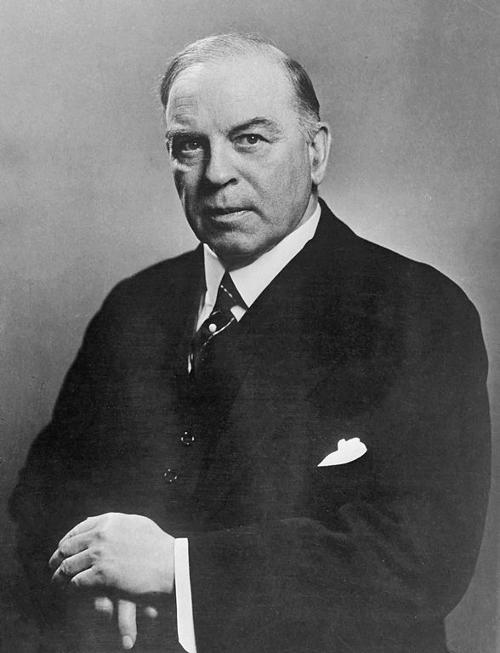 Lester Bowles Pearson CanadaPhoto: Public domain
Lester Bowles Pearson CanadaPhoto: Public domain
After the war, the decline of world power in Great Britain continued and a movement arose in Canada to free itself from British rule. Canada also began to focus more and more on the United States, which for some time had emerged as the world's largest economic and military power. It was Canada, among others, that founded the successor to the League of Nations, the United Nations, in 1945. Accession to NATO followed four years later.
Liberal Prime Minister W.L.Mackenzie King, who had been in power since 1935, was succeeded in 1948 by fellow party member Louis Saint Laurent. Relations with the United States became even closer, partly due to the installation in Canada of missile attack warning systems of the Soviet Union. In 1957 conservative John G. Diefenbaker came to power. A turbulent reign followed. Relations with the United States deteriorated as Canada sought to curtail the economic influence of the United States. The province of Quebec also caused problems again due to their drive for greater independence.
After the 1963 elections, Lester Bowles Pearson's liberal government came to power. The Pearson period was also dominated by the rebellious province of Québec. People still insisted on special status, but there was also a movement that demanded complete independence, the French Separatist Movement.
On February 15, 1965, after much squabbling, the new national flag of Canada came into use. In 1967 the Expo67 was held in Montreal and attention was drawn to the intimate ties that had developed between Québev and France. Quebec even entered into unofficial relations with France, which in the person of French President Charles de Gaulle wholeheartedly supported the independence movement in Québec.
Period Trudeau
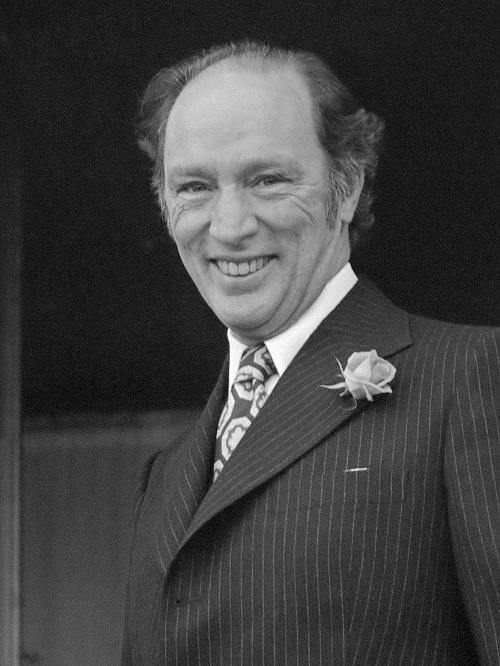 Pierre Elliot Trudeau CanadaPhoto: Rob Mieremet / Anefo CC 3.0 Unported no changes made
Pierre Elliot Trudeau CanadaPhoto: Rob Mieremet / Anefo CC 3.0 Unported no changes made
In 1968 Pearson was succeeded by another liberal, Pierre Elliott Trudeau. His first reign was dominated by unemployment, inflation and acts of violence by the French secessionist movement. No wonder the 1972 elections were lost. Yet Trudeau managed to form a minority government with the New Democratic Party. Two years later, new elections were held with a big victory for the Liberals of Trudeau.
In the late 1970s, economic problems intensified and major problems arose from the new constitution, which replaced the old British North American Act of 1867. The provinces found that little attention was paid to the position and problems of the provinces by the federal government. Partly because of this problem, Trudeau suffered a defeat in the elections in May 1979.
Canada's new prime minister became young conservative Joe Clark of the Progressive Conservative Party. Because of inexperience and the failure to keep promises, the period of Clark lasted only a short time. As early as December, a vote of no confidence was passed by Trudeau's Liberal Party, which was passed. Parliament was dissolved and new elections were held on February 18, 1980, which were amply won by Trudeau's party.
On May 20, 1980, a referendum was held in Quebec on the plans of Québec's Prime Minister, Rene Lévesque. He wanted to negotiate a so-called sovereign alliance with its own legal powers, its own taxes and its own foreign policy. To his dismay, his own supporters rejected the proposal. The big winner was the Liberal party of Claude Ryan, who was against Levesque's plans, and the Parti Québecois. Trudeau stepped down in June 1984, and subsequent elections were won by Brian Mulroney's Progressive Conservative Party. In June 1993, he retired from politics and was succeeded by Mulroney's first female prime minister, Kim Campbell.
Liberal governments
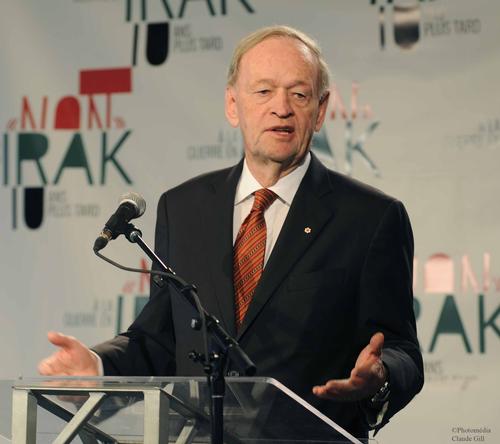 Jean Chrétien CanadaPhoto: Joe Howell CC 2.0 Generic no changes made
Jean Chrétien CanadaPhoto: Joe Howell CC 2.0 Generic no changes made
In the October 1993 elections, Campbell's conservative party was crushed by the Liberals. The Conservatives left only 2 of their 153 seats after their nine-year reign. The new Prime Minister was Jean Chrétien of the Liberal Party.
Quebec status was raised again in October 1995, but again in a referendum the Québécois narrowly rejected a proposal to leave the Canadian federation. Jacques Parizeau stepped down as prime minister and leader of the Parti Québécois after the defeat and was succeeded in both positions by Lucien Bouchard, former leader of the Bloc Québécois in Ottawa Parliament. Bouchard took a conciliatory stance towards the Ottawa government and promised not to hold another referendum on Quebec independence before 1999. The Québev affair was provisionally brought to an end in August 1998 when the Supreme Court ruled that the province of Québec was not entitled to secede from Canada under the Constitution.
In the early parliamentary elections of June 1997, the Liberals managed to maintain a narrow majority. In February 1999, the federal government and the nine English-speaking provinces signed a treaty that laid down rules for federal and provincial social security. Québec rejected the treaty as an undesirable restriction on provincial authority. In May 1999, Canada participated in NATO air strikes on Yugoslavia, reflecting the situation in Kosovo. Also in 1999, the Nanavutin administrative unit came into force, giving the Inuit a great deal of autonomy.
21st century
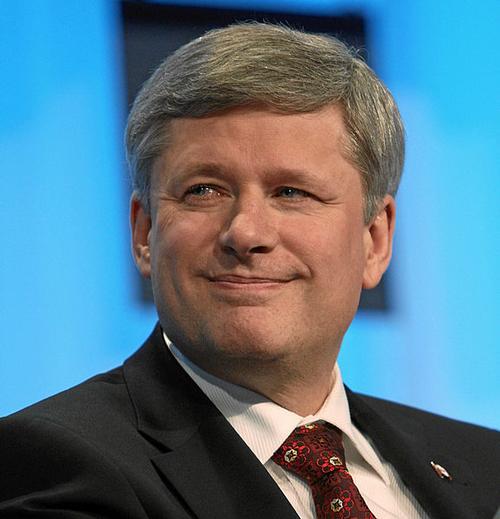
The early elections of November 27, 2000 were again won by the liberals of Jean Chrétien. Within the liberal party, problems arise as a result of the rivalry between Prime Minister Chrétien and his Finance Minister Paul Martin, who was fired on 2 June 2002.
After the 2006 elections, the distribution of seats (total 308 seats) in the House of Representatives is as follows (Distribution of seats after the 2004 elections in brackets):
Conservatives (Conservative) - 124 (99)
Liberals (progressive liberal) - 103 (135)
Bloc Québécois (Québec Seperatist) - 51 (54)
New Democratic Party (Socialist) - 29 (19)
Independent / Partyless - 1 (1)
The party with a majority of votes constitutes the government consisting of a prime minister and several ministers who are also members of parliament. Together they form the cabinet. If there is no majority majority party, as was the case after the 2004 and 2006 elections, the largest party will generally be a minority government. It often rules with the support of one or more other parties without forming a formal coalition. As a rule, minority cabinets sit for no more than one to two years.
The current government has been formed since February 2006 by the Conservatives led by Prime Minister Stephen Harper. Since the Conservatives do not have an absolute majority in parliament, they will have to seek support for their government policy from the other parties. In October 2008 Harper wins the elections again, but again does not reach an absolute majority. In December 2008, the opposition attempted to send the conservatives' minority cabinet home for failing to address the global financial crisis. Harper survives a vote of no confidence. In February 2009, parliament gave the green light to the budget, which means that the minority cabinet survives. In March 2011, opposition parties withdraw support for the minority cabinet. In May 2011, the conservatives led by Stephen Harper win the parliamentary elections, Harper remains president with an absolute majority in parliament. In April 2013, Canada foils an attack on a train in Toronto by terrorists from Iran, Iran denies any involvement. In October 2014, Canada decided to participate in bombings of the Islamic State.
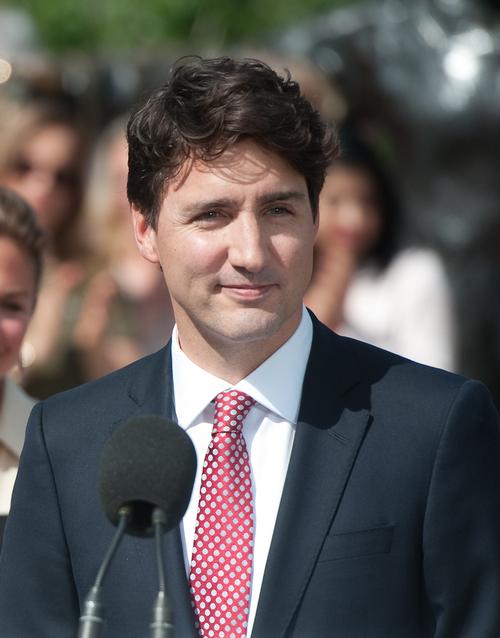 Justin Trudeau CanadaPhoto:Women Deliver CC 2.0 Generic no changes made
Justin Trudeau CanadaPhoto:Women Deliver CC 2.0 Generic no changes made
Liberal leader Justin Trudeau wins the parliamentary election in November 2015, ending the 9-year Harper era. Trudeau wants to bring new impetus and will participate in the Gay Pride in Toronto in 2016. In October 2016, Canada concludes a trade agreement with the EU. In July 2017, Cannada celebrates the country's 150th anniversary. In September 2019, Trudeau must form a minority cabinet, he has lost his absolute majority.
Sources
Canada
The Reader’s Digest
Canada
Cambium
Heetvelt, A. / Canada
ANWB
Ivory, M. / Canada
Kosmos-Z&K
Jepson, T. / Canada
Van Reemst
Njio, F. / Canada
Kosmos-Z&K
Roy, G. / North Canada
Bradt Wal, C.P.F. van der / Canada van A tot Z : praktische informatie over wonen en werken in Canada
DEN, Stichting Dienstverlening Emigratie Nederland
Weber, Wolfgang R. / West-Canada : Alberta, British Columbia
Lannoo
Zuilen, A.J. van / Gids voor Canada
Gottmer
CIA - World Factbook
BBC - Country Profiles
Copyright: Team The World of Info